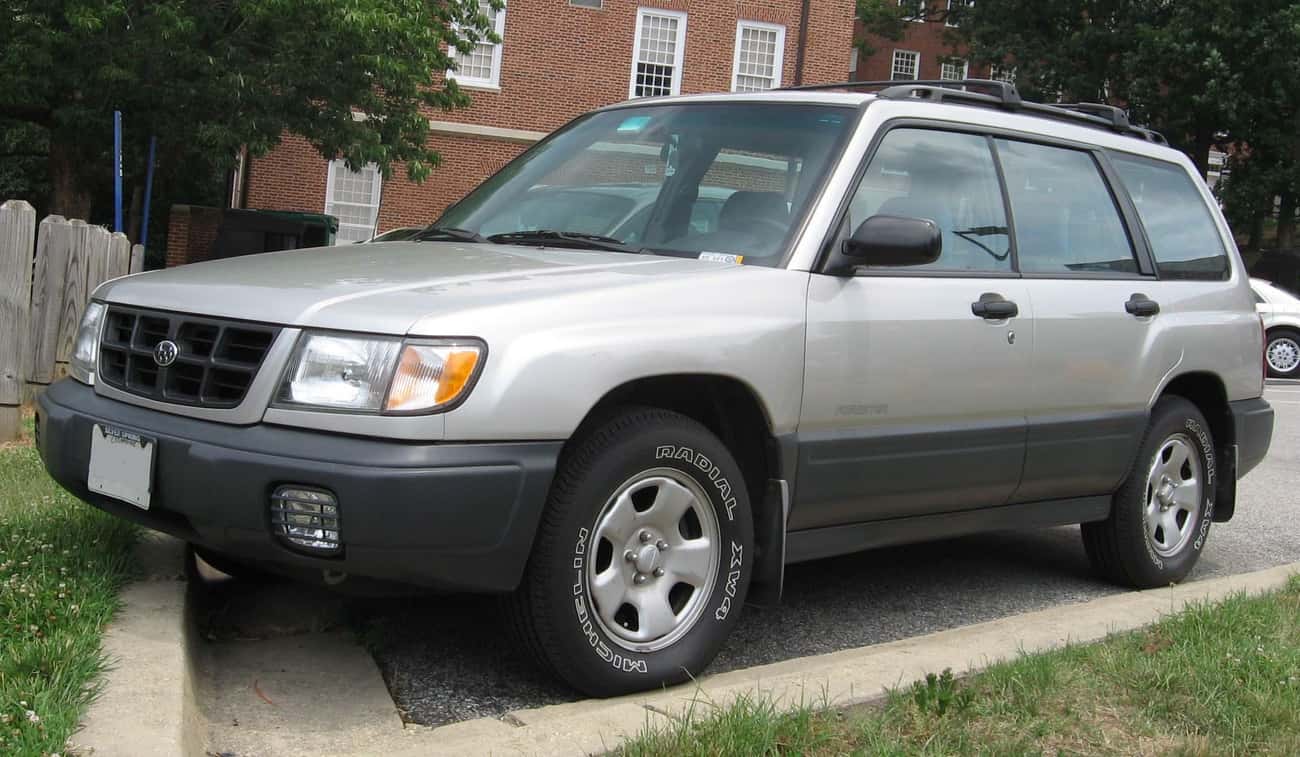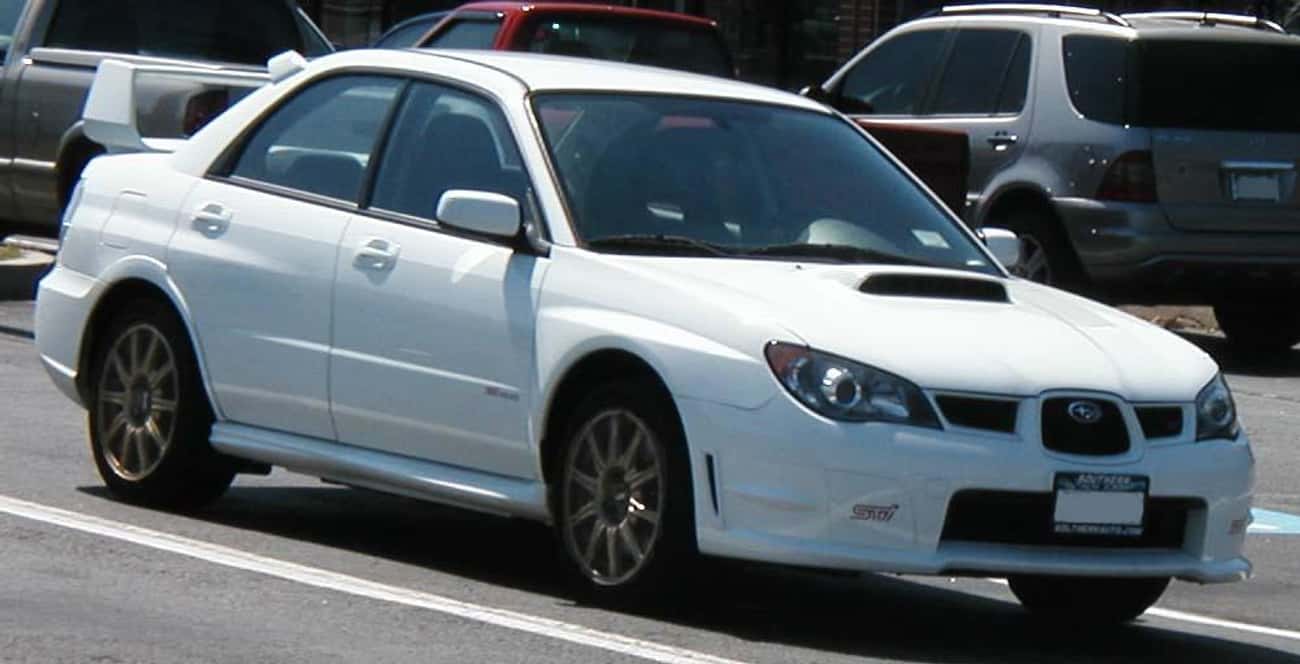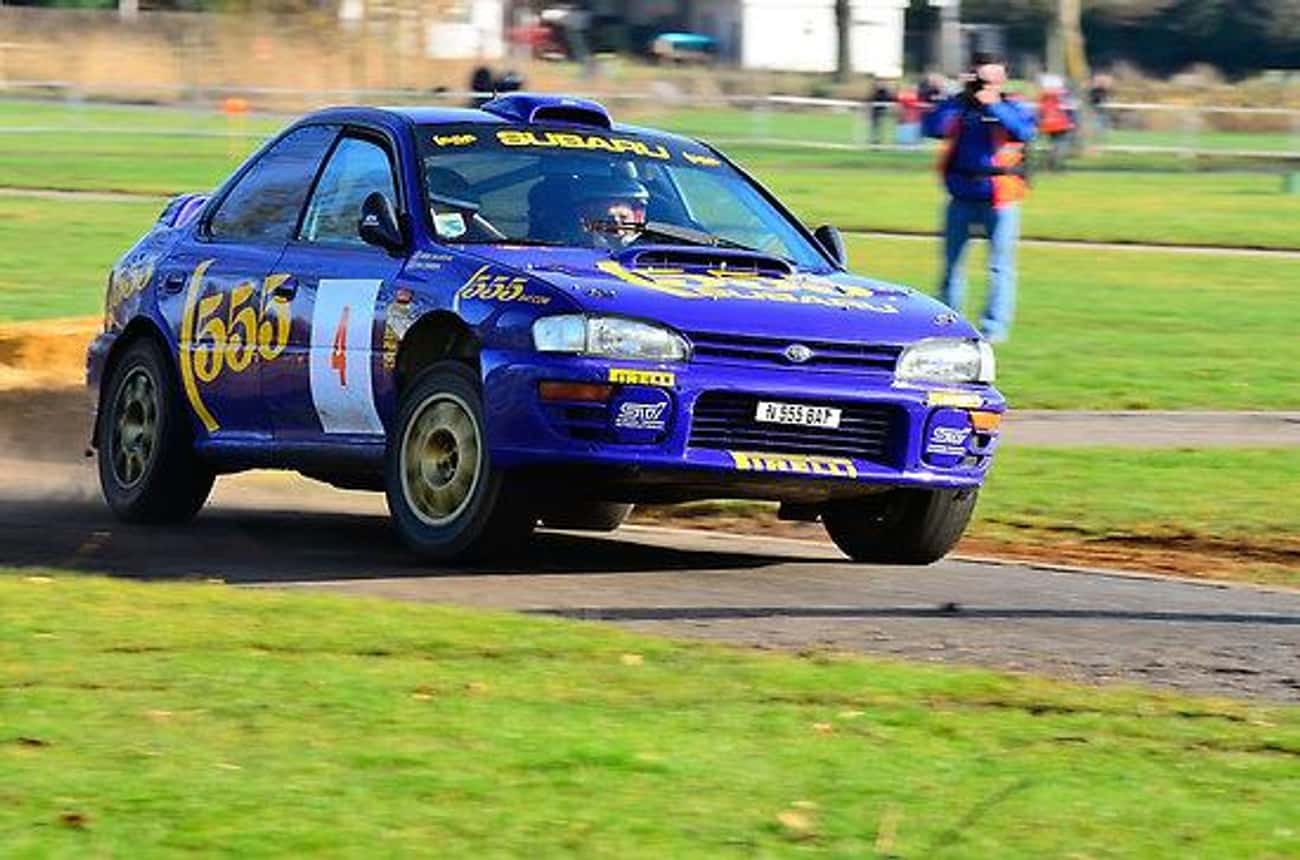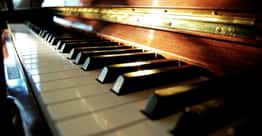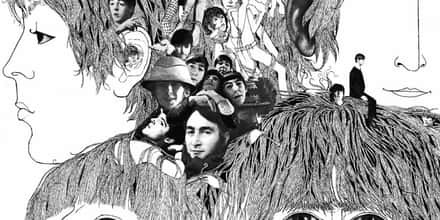Full List of Subaru Models
- Photo: Metaweb (FB) / Public domainThe Subaru Forester is a compact crossover manufactured since 1997 by Fuji Heavy Industries and sold under the Subaru brand. Available in Japan from 1997, the Forester shares its platform with the Impreza. It was introduced in 1997 as a compact crossover wagon. It has been crowned Motor Trend's 2009 and 2014 SUV of the Year and The Car Connection's Best Car To Buy 2014.More Subaru Forester
- #46 of 74 onThe Top Cars For Teenagers
- #4 of 20 onThe Best Cars for Senior Citizens
- #6 of 20 onThe Best Recreational Cars And SUVs
- Photo: Metaweb (FB) / Public domainThe Subaru Outback is an automotive nameplate used by the Japanese automaker Subaru for two different vehicles: a Legacy-based station wagon (1994–present), the Outback; and an Impreza-derived hatchback, the Outback Sport (1994–2011). Many versions of the Outback wagon and Outback Sport have either had an all-wheel-drive option or standard equipment. The Outback station wagon originally derived from the station wagon variant of the Subaru Legacy. The first generation Legacy, which made its debut in 1989, did not receive the cosmetic and suspension modifications to create an Outback version, although Subaru offered an Outdoor option package for the 1994 model year Legacy L all-wheel-drive model, which added an adjustable suspension, a luggage rack, a skid plate, and mud flaps. Earlier, a raised-roof "Touring Wagon" variant had been offered on the preceding Subaru Leone for the 1988 and 1989 model years.More Subaru Outback
- Dig Deeper...Police Vehicles: Police Car Models Chosen In US and Canada
- #7 of 20 onThe Best Cars for Senior Citizens
- #13 of 39 onThe Best Car Values
- Photo: Metaweb (FB) / Public domain
- #7 of 61 onThe Best Inexpensive Cars You'd Love to Own
- #109 of 223 onThe Ultimate Dream Garage
- #16 of 25 onThe 25 Best Off-Road Vehicles Of All Time
- Photo: Wikimedia Commons / CC-BYThe Subaru Impreza is a compact automobile, manufactured since 1992 by Subaru—the automobile division of Japanese transportation conglomerate, Fuji Heavy Industries. Subaru introduced the Impreza as a replacement for the Leone, with the Leone's EA series engines replaced by the newer EJ series versions. Now in its fourth generation, Subaru has offered four-door sedan and five-door hatchback body variants since 1992; the firm also offered a coupe from 1995 for the first generation only. Mainstream versions have received naturally aspirated "boxer" flat-four engines ranging from 1.5- to 2.5-liters, with the performance-oriented Impreza WRX and WRX STI models uprated with the addition of turbochargers. Since the third generation series, some markets have adopted the abbreviated Subaru WRX name for these high-performance variants. The first three generations of Impreza in North America were also available with an off-road appearance package titled Subaru Outback Sport. For the fourth generation, this appearance package became known as the Subaru XV, and is sold internationally. Subaru has offered both front- and all-wheel drive versions of the Impreza.More Subaru Impreza
- Dig Deeper...The Best All Wheel Drive Cars of All Time, Ranked
- #1 of 74 onThe Top Cars For Teenagers
- #187 of 223 onThe Ultimate Dream Garage
- Photo: Metaweb (FB) / Public domainThe Subaru Baja is an all-wheel-drive, four passenger, four-door, open-bed pickup truck manufactured from 2002 to 2006 by Subaru and marketed for model years 2003 to 2006. The Baja combines the handling and passenger carrying characteristics of a traditional passenger car with the open-bed versatility, and to a lesser degree, load capacity of a pickup truck. The Baja is named after Mexico's Baja California peninsula—home to the Baja 1000 off-road race. The unibody design borrowed heavily from the existing mechanicals, platform and sheet metal of the Subaru Legacy/Outback wagon. Production began on July 18, 2002 as a 2003 model at the Subaru of Indiana Automotive, Inc. factory in Lafayette, Indiana.
- Photo: Metaweb (FB) / Public domainThe Subaru Tribeca is a mid-size crossover SUV sold since 2005 by Subaru, the automobile manufacturing division of Japanese transportation conglomerate Fuji Heavy Industries. Released in some markets as the Subaru B9 Tribeca, the name "Tribeca" derives from the TriBeCa neighborhood of New York City. Built on the Subaru Legacy platform and sold in five- and seven-seat configurations, the Tribeca was intended to be sold alongside a slightly revised version known as the Saab 9-6. Saab, at the time a subsidiary of General Motors, abandoned the 9-6 program just prior to its release subsequent to GM's 2005 divestiture of its 20 percent stake in FHI. Inspired by the B9X concept car, the Tribeca's original design was criticised at launch and subsequently revised in 2007, along with the model name revised to simply Tribeca in all markets. Although not sold in Japan, North American markets received the Tribeca in 2005 for the 2006 model year, while it was introduced to Australasia in late 2006, with an introduction to Europe in 2007. In addition to these markets, the Tribeca is also available in Chile, Argentina, China, and parts of Southeast Asia.
- Photo: Metaweb (FB) / Public domainThe Subaru BRAT is a coupé utility version of the Subaru Leone, built from the late 1970s into the early 1990s. Developed in Japan during 1977 at the request of the President of Subaru of America, the BRAT was designed on the basis of the company's four-wheel drive "Leone" station wagon. It was first introduced in 1977 for the 1978 model year and followed the concept of the Chevrolet El Camino and the Ford Ranchero.
- Photo: Metaweb (FB) / Public domainThe Subaru Leone is a compact car produced by the Japanese car manufacturer Fuji Heavy Industries from 1971 to 1994. The word "leone" is Italian for lion. It was released as a replacement to the Subaru 1000 and was the predecessor to the Subaru Impreza. All Leones were powered by the Subaru EA boxer engine. Most cars were equipped with optional four-wheel drive. At the time of its introduction, the Leone was Subaru's top model until 1989, when the larger Legacy was introduced. Although released in Japan and some export markets as the Leone, for many years, this was the only vehicle sold internationally by Subaru where the smaller kei cars Rex, Vivio, R-2, 360 and Sambar were not sold or considered road legal. As a result in major markets such as Australia, Europe and North America, it was instead identified with a trim level designation, some of which included: DL, GL, GLF, GLF5, GL-10, and RX. This means the car is often referred to simply as the Subaru GL or the Subaru L-Series.
- Photo: Metaweb (FB) / Public domain
- Photo: Metaweb (FB) / Public domainThe Subaru Alcyone SVX, also known outside of its home market Japan as the Subaru SVX, is a two-door grand tourer coupé that was sold by Subaru, the automobile manufacturing division of Japanese transportation conglomerate Fuji Heavy Industries. Produced from 1991 to December 1996, it was FHI's first attempt to enter the luxury/performance car market. Its intention was to combine two seemingly contradictory elements—comfort and performance. The name "Alcyone" refers to the brightest star in the Pleiades star cluster, on which the Subaru logo is based.
- Photo: Metaweb (FB) / Public domainThe Subaru R-2 was a kei car manufactured by Subaru from 1969 to 1972. The R-2 was a full model change of the popular Subaru 360, but with an updated appearance and increased interior space. The R-2 appeared approximately one year before the Honda Life, Daihatsu Fellow Max and Suzuki Fronte kei cars, however, it continued to use the powertrain setup from the Subaru 360, which was the EK33 air-cooled 2-cylinder engine installed in the back, which is the inspiration for the name of the vehicle. It appeared around the same time as the second generation Mitsubishi Minica. When the car was introduced February 8, 1969, Subaru took 25,000 orders for the car in one month. Sales began in August of that year. In the early 1970s, the Japanese government enacted legislation to reduce emissions, which prompted Subaru and other manufacturers to upgrade engines that were air-cooled and using a two-stroke engine implementation. On October 7, 1971, the Subaru engine was upgraded to a two-stroke water-cooled engine, called the EK34 series engine, but the retrofit was hastily done, and was better achieved with the new 1972 Subaru Rex, which was available with both 2- and 4-doors.
- Subaru launched the third generation Japanese and world-market Legacy in June 1998, while the North American model was introduced in 2000. In all markets except for the United States, production lasted through 2002, with a limited production Blitzen model sold mid-cycle under the 2003 model year in Japan. Production in the United States lasted through 2004. At its introduction in 1999, it won the Automotive Researchers' and Journalists' Conference Car of the Year award in Japan. All models were equipped with standard, symmetrical all wheel drive. World-market and Japanese models ranged from a normally aspirated 2.0 liter flat-4 to the EZ30 in the 3.0R model. Even though dimensions became mid-sized, it was still rated by the EPA as a compact car. Flat roof wagons are no longer manufactured worldwide, and instead the raised roof is used for both the Legacy wagon and Legacy Outback. In 2001 the EZ30, a newly designed 3.0 L H6 was offered in the Outbacks. The Legacy is the only vehicle in this class that provides AWD as standard equipment.
- Photo: Metaweb (FB) / CC-BY-SA-2.5The Subaru FF-1 Star was a development of the original front wheel drive Subaru, the 1000. The FF-1 was marketed as the Star in the United States in 1970 and 1971 model years, and was replaced by the FF-1 G in 1972 but remained in production in some markets until 1973. There were coupe, sedan, and station wagon models available. This model only came with the EA-61 engine and four-speed manual transmission.
- Photo: Metaweb (FB) / CC-BY-SA-2.5The Subaru FF-1 G was a compact car from the 1970s, replacing the FF-1 Star. It was a front wheel drive vehicle with a typical Subaru EA61 or EA62 flat-4 engine. A fully independent torsion bar suspension and rack and pinion steering were impressive for the time. The inboard front drum brakes were an oddity. Also strange were the dual radiators - the car used only a small radiator on starting, hastening warmup. Even in 1972, Subaru boasted about the foul-weather handling of their cars, and they were quite successful. Priced at just over US$2,000 and achieving 29 miles per US gallon, the Subaru quickly became a strong selling import car in the United States.
- The Subaru Vivio is a kei car that was introduced in March 1992, and manufactured by Subaru until October 1998. It has a 658 cc multi-point fuel-injected four-cylinder engine, which is small enough to place it in the light car class, giving its owners large tax breaks in Japan. There was also a carbureted version with 42 PS in Japan, which equipped the Vivio Van version. The Vivio feels roomy considering its small size, thanks to a relatively tall profile and large windows. It is one of the lightest kei cars, weighing in at between 650 kg and 700 kg depending on the trim line.
- Photo: Metaweb (FB) / Public domainThe fourth generation of the Subaru Legacy was introduced in 2003 and saw a complete redesign of the Legacy on an all-new platform.
- Photo: Metaweb (FB) / Public domainThe Subaru Legacy is a mid-size car built by Japanese automobile manufacturer Subaru since 1989. Part of the original design goals for the Legacy model was to provide Subaru a vehicle in which they could compete in the lucrative North American midsize market against competitors Honda Accord and Toyota Camry. Higher performance variants of the Legacy are offered as competitive alternatives to compact executive cars such as the Audi A4, Alfa Romeo 159 and BMW 3 Series. The Legacy also serves as Subaru's flagship car. In 1996, a variant of the Legacy with heightened suspension called the Legacy Outback was introduced to compete in the burgeoning sport-utility vehicle class and proved to be a sales success for Subaru. The Outback line was split into its own model in 2000, known as the Subaru Outback. It is unique in its class for offering all wheel drive as a standard feature, and Subaru's traditional boxer engine. The Legacy bears the name Liberty in Australia out of deference to Legacy Australia, a veterans' assistance organization. As of 2008, 3.6 million Legacies have been built since its 1989 introduction.
- Photo: Metaweb (FB) / Public domainThe Subaru Justy is a subcompact hatchback that has been sold by Japanese automobile manufacturer Subaru since 1984. Subaru manufactured the Justy from 1984 to 1994, then it has sold rebadged versions of other vehicles under the Justy nameplate. The company introduced the latest iteration, a rebadged Daihatsu Boon, at the 2007 Frankfurt Motor Show with a 1.0 or 1.2 litre straight-three engine, front/four wheel drive, electronically controlled continuously variable transaxle, or a 5-speed manual transaxle. For the 2010 model year, the Justy was replaced with the Subaru Trezia.
- Photo: Metaweb (FB) / CC-BY-SA-2.5The Subaru 1000 was the first front wheel drive Subaru produced by Fuji Heavy Industries that was in the Japanese government "compact car" classification starting in 1966. Previous Subaru models such as the Subaru 360 and the Sambar had been rear-engined, rear wheel drive kei cars. It was the first production Subaru to use a boxer engine. In 1960, Subaru management decided to introduce a successor to the prototype Subaru 1500 with a new code name A-5 with a four-cycle air-cooled horizontally opposed four-cylinder engine displacing 1500 cc, driving the front wheels in a compact car platform. It was to have a double wishbone front suspension. Due to FHI's limited resources, the car was not produced. The Subaru 360 was selling at the time but Subaru wanted a car that could comfortably carry four passengers without a cramped compartment, that would appear to be an alternative to the Toyota Publica, the Datsun 110/210, the Hino Contessa, and the Mitsubishi Colt 600.
- The Subaru 360 is a rear-engined, two-door city car manufactured and marketed from 1958 to 1971 by Subaru. As the company's first automobile, production reached 392,000 over its 12 year model run. Noted for its small overall size, 1,000 lb curb weight, monocoque construction, swing axle rear suspension, fiberglass roof panel, and rear-hinged doors, the inexpensive car was designed in response to the Japanese government's light car or Kei car regulations and its proposal for a larger "national car," both intended to help motorize the post WWII Japanese population. The 360's overall size and engine capacity complied with Japan's Kei car regulations. Nicknamed the "ladybug" in Japan, and ultimately superseded by R-2, the 360 was one of Japan's most popular cars and was available in a single generation in two-door, station wagon, "convertible" and sport model variants.10,000 were sold in the United States, imported by Malcolm Bricklin — advertised as "Cheap and Ugly." The nameplate 360 derived from its tax-limited engine displacement: 356 cc engine.
- The Subaru Pleo is a kei car from Subaru. The Pleo is taller than conventional kei car hatchbacks, but shorter than the definitive microvan, the Suzuki Wagon R, and is available with a variety of 658 cc I4 engines: SOHC, DOHC, and supercharged in two different trim levels. It competes with the Honda Life, Daihatsu Cuore, and the Mitsubishi Toppo in the tall wagon segment of kei cars in Japan. The Pleo was launched in 1998, and has since undergone four upgrades, one in 2000, another in 2001, another in 2002, and another in 2010.
- Photo: Metaweb (FB) / Public domainThe Subaru Rex, also known as Ace, Viki, Sherpa, 500/600/700, Mini Jumbo or M60/M70/M80 in various export markets, is a kei class automobile produced from 1972 to 1992 mainly for sale in Japan by Subaru, although it was also sold in Europe, South America, Australia and the Caribbean. The Rex superseded the R-2 as Subaru's kei car, and has been available in commercial use versions as well as in a passenger car version. It underwent major changes in 1976, in fall 1981, and again in late 1986. The second generation Rex also formed the basis for the larger Subaru Justy. The name "Rex" comes from the Latin word for "king". In some export markets, the Sambar microvan has been marketed as the "Rex Combi".
- Photo: Metaweb (FB) / Public domainThe Subaru XT is a 2-door coupé that was produced from 1985 to 1991. The name Alcyone was used in Japan, the Vortex name was used in Australia and New Zealand, and the name XT or XT6, was sold in North America and Europe. All were available in front-wheel drive or four-wheel drive, depending on the year. The Subaru XT was launched in February 1985 in the American market, followed by a June debut in Japan. The Alcyone name comes from the brightest star in the Pleiades star cluster, on which the Subaru logo is based. The XT range was replaced by the Subaru SVX in 1992.
- The Subaru Sumo, known as the Libero in European markets except the UK, Norway, and Sweden, and as the Domingo in the Japanese market, was a microvan produced from 1983 to 1998. In Sweden, it was known as the Columbuss, and in Taiwan the latter generation was marketed as the Estratto. It was also called the Subaru E10 and Subaru E12 respectively in some places, the names referring to the size of the engines. The Sumo shared many characteristics with the Sambar, except it had extended front and rear bumpers and a larger engine borrowed from the Subaru Justy. Because of these modifications, it didn't conform to kei car regulations, which stipulate the maximum dimensions of the vehicle and the maximum engine displacement requirements, which then determine the vehicle tax to be paid. It was launched with the option of four-wheel drive and powered by 1.0- and 1.2-litre 3-cylinder EF engines based on those used in the Subaru Justy although in the van they were rear mounted. Somewhat unusual for a microvan, the 1,200 cc Sumo could be ordered with selectable 4WD, operated via a gear stick mounted button.
- Photo: Metaweb (FB) / Public domainThe Subaru Sambar is a very small vehicle built by automaker Subaru for the Japanese market. It is Japan's first Keitora, shorthand for "kei class truck" and is still in production. The Sambar is available in both microvan and Kei truck to fulfill the Kei car guidelines. Still popular in the domestic market, the Sambar continues to be produced in Japan, China, Korea, as well as in Finland with a joint venture with Elcat Automotive. Since its introduction, the Sambar has used a rear engine, rear wheel drive format, with the first two generations using the air-cooled engine from the Subaru 360, and later generations using the water-cooled engine from the Subaru Rex, Vivio and the Pleo. Until 2012 the Subaru Sambar model was still using the Sixth Generation chassis and body with updated fascia. It was the first Kei truck in Japan that used a cabover design, with the passenger cabin over the engine. The current generation is a rebadged Daihatsu Hijet/Atrai. The name Sambar is very similar to the top trim package for the Volkswagen Type 2 called the Samba introduced in 1951, which also used an air-cooled engine installed in the back, utilizing rear-wheel-drive.
- Photo: Metaweb (FB) / Public domainThe Subaru R1e is a battery-electric microcar undergoing development and testing. The car was jointly developed with Tokyo Electric Power, the giant Japanese utility company. Currently 10 prototypes have been built and are undergoing testing by Tokyo Electric Power, which plans to eventually operate 3,000 of the vehicles starting in 2008. The vehicle has a range of 50 miles and a top speed of 62 mph. The prototype is a two-door, two seat vehicle based upon the Subaru R1 gasoline vehicle. This vehicle has received intense interest from electric vehicle fans owing to its modern battery technology, appropriate size, and potential performance attributes. It also has the same grille as the 1st generation Subaru Tribeca. The car uses a lithium-ion battery which was developed in cooperation with NEC and can be recharged to 80% capacity in eight minutes using a special rapid charger, or to 100% charge in eight hours on a standard 100 V plug. Battery life is at least 10 years or 144,000-plus miles. Tokyo Electric Power company plans on producing 150 fast-charge stations. Another electric prototype car, the G4e, is a follow-up to the R1e with an improved battery, range, and bolder styling.
- Photo: Metaweb (FB) / Public domainThe first vehicle built by the automotive division of Fuji Heavy Industries was called the Subaru 1500, with the development code-name of P1. The prototype used a monocoque body structure and adopting the "ponton" style appearance, with an independent front wishbone suspension and a rear leaf spring suspension with three plates and a live rear axle. The 1.5 litre four-cylinder OHV engine, code named "FG4A" was sourced from Peugeot from the Peugeot 202, and built by Fuji Precision Technology, later known as the Prince Motor Company. The FG4A engine was related to the Prince GA4 with some modification, and was shared with the Prince Sedan introduced in 1952. The 1500 has a similar appearance to the Peugeot 403. Later a different engine was developed in-house by Fuji Heavy Industries, code named "L4-1" which was also a 1.5 litre OHV engine, that was 20 percent lighter than the previous engine used. The "P-1" was water-cooled and used an four-cylinder inline engine. Only 20 "P-1"'s were built, all in 1954, with 11 vehicles using the "FG4A" engine. Six units were provided to the taxi companies in Isesaki, Ota and Honjo Cities for private testing, with successful results.
- Subaru B9 Scrambler is an automobile from Subaru. It's a classic, open sports car. It's a 4.2 metres long two seater powered by a 140 hp hybrid engine. The design is done by Andreas Zapatinas. The engine is a 2.0 litre flat-4 cylinder hybrid. The ride height can be adjusted through a self-leveling air suspension. This concept car was first shown in 2003 at the Tokyo Motor Show. It was designed with influence from Subaru's aircraft heritage, with the front end appearing to look like the cross section of an airliner, with a central jet intake and wings. The lower panels of the B9 are dent resistant.
- The Subaru R1 was introduced by the Japanese carmaker Subaru on January 4, 2005. It was designed to fit within the Japanese kei car tax bracket. The R1 is a two-door version of the Subaru R2, but with a shorter body and wheelbase. The R1 is unusual in that it does not use up the maximum length allowed for by the kei car regulations—the only other kei cars to have done this since the 1989 Autozam Carol were the Suzuki Twin and the European Smart Fortwo. The R1 was only available in one spec level up to the end of 2005, using a 658cc Subaru EN engine. The engine is available in three versions: the I with the EN07U SOHC 34 kW engine, the R with the EN07D DOHC engine rated at 40 kW and the STi with an EN07X supercharged and intercooled engine rated at 47 kW. The R1 is being marketed as a personal car and as a middle-aged couple's second car; a combination of leather and alcantara seating is available. All R1s are equipped with a CVT, and all trim levels are available with front-wheel drive as well as four-wheel drive. In its promotional materials, the R1 is frequently compared to the Subaru 360, the first production Subaru automobile.
- The Subaru R2 was announced in Japan on December 8, 2003, and the R2 name was inspired by the Subaru R-2, the kei car model that was produced between 1969 and 1972. The R2's exterior reflects influence from Andreas Zapatinas, who worked at Alfa Romeo before moving to Subaru. The R2 is the first production Subaru to sport a new family look, including the aviation-inspired "spread wings grille" that is also used by Tribeca and Impreza. The R2's exterior dimensions are largely similar to its predecessor, the Subaru Pleo, but unlike the squarish Pleo, the R2 is deliberately rounded, less space efficient form. Three variations of the 4-cylinder, 658 cc engine are available: SOHC DOHC AVCS DOHC with supercharger and intercooler Unlike other Subaru models which use Boxer engines, the R2 uses an inline engine. The two lower engine options are available with either a manual transmission or a CVT. The supercharged engine is coupled to a sportshift version of the CVT. Both front wheel drive and all wheel drive are available. Initially, the R2 was available in 11 colors and 3 trim levels.


